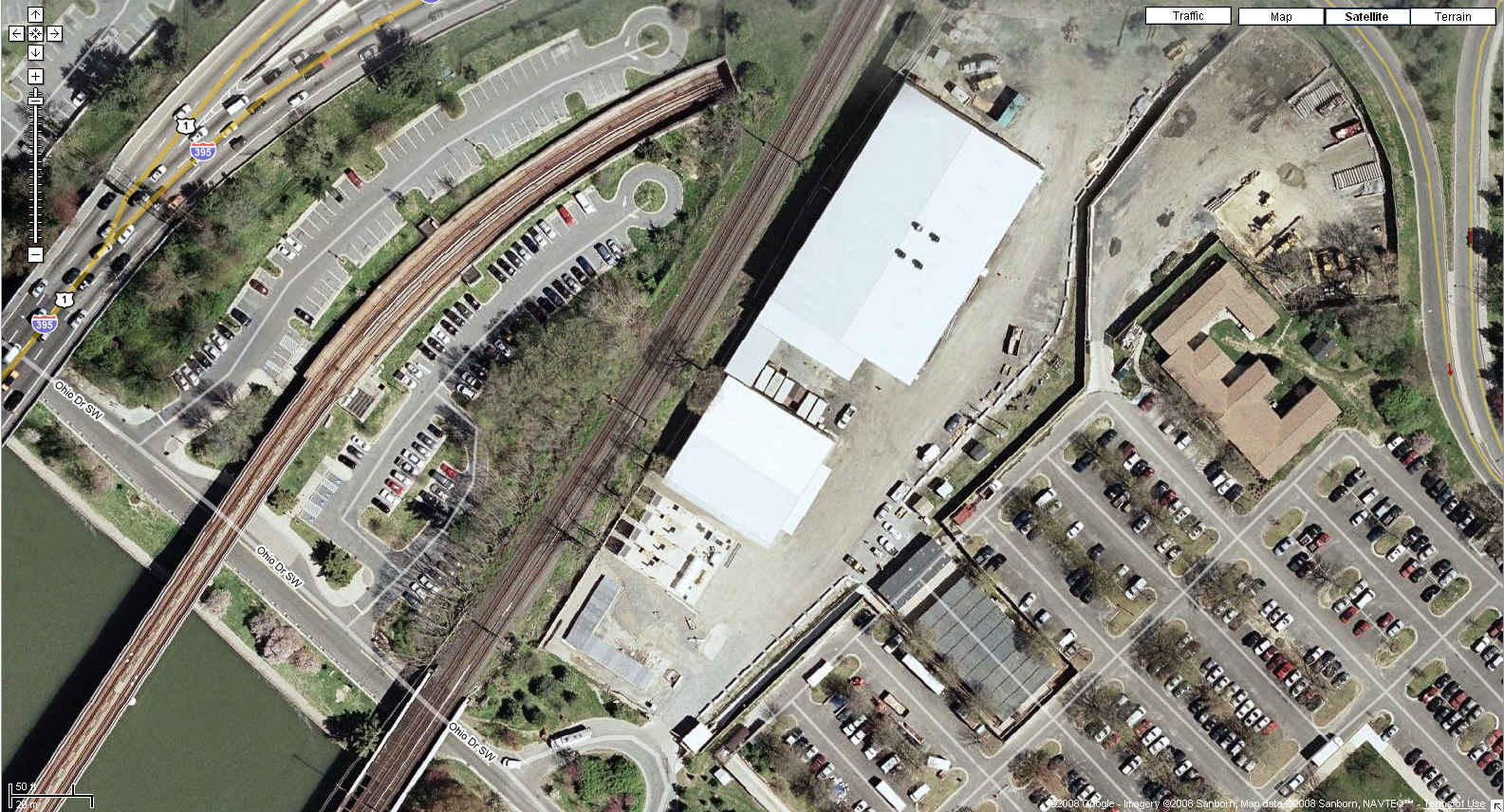
|
|||||||
|
Cryptome DVDs are offered by Cryptome. Donate $25 for two DVDs of the Cryptome 12-years collection of 46,000 files from June 1996 to June 2008 (~6.7 GB). Click Paypal or mail check/MO made out to John Young, 251 West 89th Street, New York, NY 10024. The collection includes all files of cryptome.org, jya.com, cartome.org, eyeball-series.org and iraq-kill-maim.org, and 23,000 (updated) pages of counter-intelligence dossiers declassified by the US Army Information and Security Command, dating from 1945 to 1985.The DVDs will be sent anywhere worldwide without extra cost. | ||||||
See also: http://eyeball-series.org/dcnavy/dcnavy-eyeball.htm
9 February 2008. Add Google aerial of the secret US Navy project:
| http://maps.google.com/maps?f=q&hl=en&geocode=&q=2N37+Plaza+A,+washington,dc&ie=UTF8&ll=38.877837,-77.035478&spn=0.001789,0.004249&t=h&z=19&om=0
|
30 November 2004. Add Digital Globe aerials of the Navy facility, White House and Vice-President's residence of 1 January 2004, purchased 29 November 2004.
26 November 2004. One of the Eyeball series.
Thanks to Judy Scott Feldman, Chairman, National Coalition to Save Our Mall, the correct location of the secret Navy faciltiy has been identified, shown on revised maps and aerials below. More on the Coalition:
http://www.savethemall.org
http://www.themallconservancy.org
The Digital Globe aerial of May 2004 previously published here does not include the corrected location (it is just off the bottom edge of the photo), so the most recent aerial if that of USGS Seamless in April 2002.
Additional information and images of the site, from the ground or space, are welcomed; send to jya@pipeline.com. Use and anonymous remailer and/or PGP, as preferred. PK on Cryptome.org
Maps from Mapquest.com
Topo map and aerial:
Terraserver-USA
Aerial photos from USGS Seamless
and Digital Globe.
Thanks to P. add NASA White House photo from April 2001:
http://svs.gsfc.nasa.gov/vis/a000000/a002000/a002092/index.html
Thanks to A.:
Washington Post, November 26, 2004, Pg. B1Navy Keeps A Secret In Plain Sight
Hush-Hush Project Underway by Potomac
By Spencer S. Hsu, Washington Post Staff Writer
Shortly after dawn on a recent morning, two dump trucks and a water tanker pulled up to a new, unmarked complex of buildings at East Potomac Park, the grassy peninsula near the Jefferson Memorial. The drivers exited their cabs, knocked at a gatehouse with blacked-out windows and waited for a security guard to emerge from behind a locked door.
A few minutes later, a panel of 10-foot-high security fence slid open, and the trucks disappeared inside, leaving the joggers and cyclists along the waterfront none the wiser about their mission.
What goes on beyond the fence is a mystery. The multi-agency review normally required to erect anything on federal parkland did not apply to the beige, metal buildings. The Navy, which operates the site at Ohio and Buckeye drives SW, calls the work a "utility assessment and upgrade" and volunteers nothing more.
"As a matter of policy, we can't go into the particulars," said a Navy spokesman, Lt. Cmdr. Joseph A. Surette.
Frederick J. Lindstrom, acting secretary of the U.S. Commission of Fine Arts, said it is illegal for him to discuss the matter. He did say the Navy started the work without seeking review from the commission, which oversees the city's Potomac River parklands.
"Let's just say when they're finished, you'll be glad they've done what they've done," Lindstrom said.
Amid the secrecy, theories abound about the four-acre complex, which is dead center in a ring that includes the White House, the U.S. Capitol, the Pentagon, Reagan National Airport and the National War College. Is it a sophisticated sensor station, guarding the 14th Street bridge and other Potomac River crossings? Is it an excavation point for underwater barriers to protect the Washington Channel and Potomac River from submarines? Is it a staging area for Navy Seabees securing underwater cables between the White House and the Pentagon, across the river?
Whatever the case, in a capital where concrete barriers and police roadblocks have become a common and often grating part of city life since Sept. 11, 2001, the Navy compound represents a more ambiguous side to security. It is visible and obscure, hidden in plain sight, billed as temporary but expected to last for years.
And it joins a network of things large and small erected to protect the capital. Wind and radiation tracking instruments sit atop the Federal Reserve. Biowarfare sensors sniff the air in front of the Smithsonian Institution. Antiaircraft systems have been spotted on a rooftop next to the White House and on a Prince George's County riverbank, across the Potomac from Mount Vernon.
For its part, the Navy began work unobtrusively about a year ago on its site near Hains Point, a recreation area known best for its golf course, fishing and "The Awakening," J. Seward Johnson Jr.'s giant sculpture.
The Navy took over the National Park Service land without any announcement. When the agencies that oversee the Mall caught up with the project months later, the hangar-like structures, which cover an excavation area, were visible from Interstate 395.
The agencies' only recourse was to ask the Justice Department to sue the Pentagon. Lindstrom said that was deemed not an option.
After inquiries, senior officials at the Fine Arts Commission and the National Capital Planning Commission were briefed about the security-sensitive project and sworn to silence. The staffs of both commissions, which review many federal agency security requests, were bypassed, and no paper trail was produced.
"The project's sponsors felt it wasn't necessary to bring it to these agencies for their review," Lindstrom said. "It's not quite right -- they should have -- but in hindsight, they did discuss the building and the project and essentially what's entailed there."
Del. Eleanor Holmes Norton (D-D.C.), who has criticized federal security projects for encroaching on life in the District, seldom lets slip an opportunity to make her point. In this case, however, Norton "is aware of what's going on but cannot comment," spokeswoman Doxie McCoy said.
A spokeswoman for the planning commission, Lisa MacSpadden, referred questions to Surette, the Navy spokesman. Surette would not say whether the project is classified or whether it had a name. Nor would he say how much it cost, how many people were on the job or why it was needed. He did say that work under the temporary structures would last about four years, that it complied with local and federal safety and environmental laws and that it would have no impact on traffic.
Mall preservationists say they appreciate the Navy's assurances -- as well as its efforts to protect the nation -- but decry the lack of oversight and public meetings by watchdog agencies.
"What is going on?" said Judy Scott Feldman, head of the National Coalition to Save Our Mall, a group of civic and professional organizations in Washington formed in 2000. "Why the Navy would be doing construction is a question . . . And if the Navy is saying it's purely a construction project, then why is it a secret?"
Temporary facilities have a way of outliving their builders, said Feldman, whose group's Web site has posted a photograph of the project.
http://www.savethemall.org/photos/charge/charge_11.html
![[Image]](usndc-savemall.jpg)
A large new "temporary" building, visible from the Jefferson
Memorial, rises on public land next to National Park Service
headquarters in East Potomac Park.
Government annexes built during World War I and II flanked both sides of the 2,000-foot-long Reflecting Pool between the Lincoln Memorial and Washington Monument until the 1970s.
"How can we be assured that big, unattractive buildings . . . are going to be gone in a matter of months?" Feldman said. "You don't necessarily raise holy heck for one project, but the problem is the secrecy. Is this one of what could become a whole lot of projects?"
Defense officials and federal planners say when the Navy is done, a small equipment shed and mutually agreeable landscaping will leave that part of East Potomac Park looking better than it did before.
Meanwhile, digging continues injury-free after more than 300 days, directed by Clark Construction of Bethesda and Kiewit, a mining and construction firm based in Omaha, according to site contract overseer Frank Nottingham.
Some passersby expressed ambivalence about the secret project. "It doesn't sound like it's a normal procedure, but it doesn't interfere with what I'm doing," said one cyclist, who declined to give his name.
John Whaley, 38, a District pollster outfitted in fleece and Lycra for his 45-minute morning bike ride, was less sanguine. "It's a little ironic, given how hard it is to put up monuments," Whaley said, referring to controversies surrounding any addition to the Mall. "Are we destroying democracy to save it?"
Others said the project added to their sense of unease. One woman, a 46-year-old who works at U.S. Park Police headquarters nearby, said employees have been told that it is a utility project. "But we don't believe it," said the woman, who declined to give her name. "It doesn't look like utility work, does it?"
The Washington Post article appears to refer to Site 2 below, although Site
1 below appears to show an earlier
phase of the project. It is not clear which of the two sites are shown in
the Save the Mall photo, but Site 1 is
closer to US Park Service HQ.
|
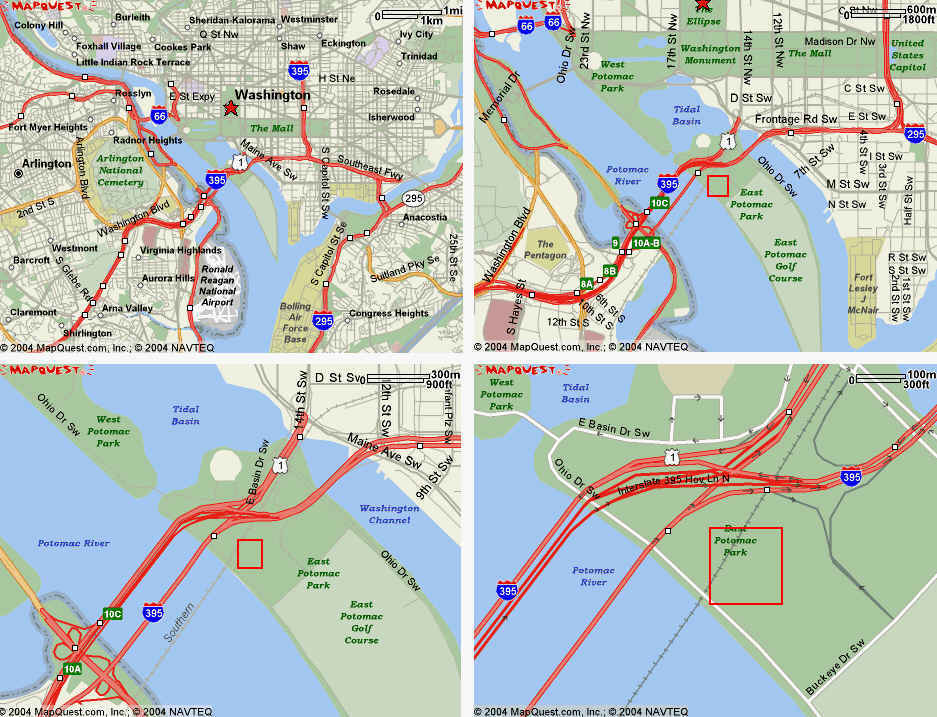 |
 |
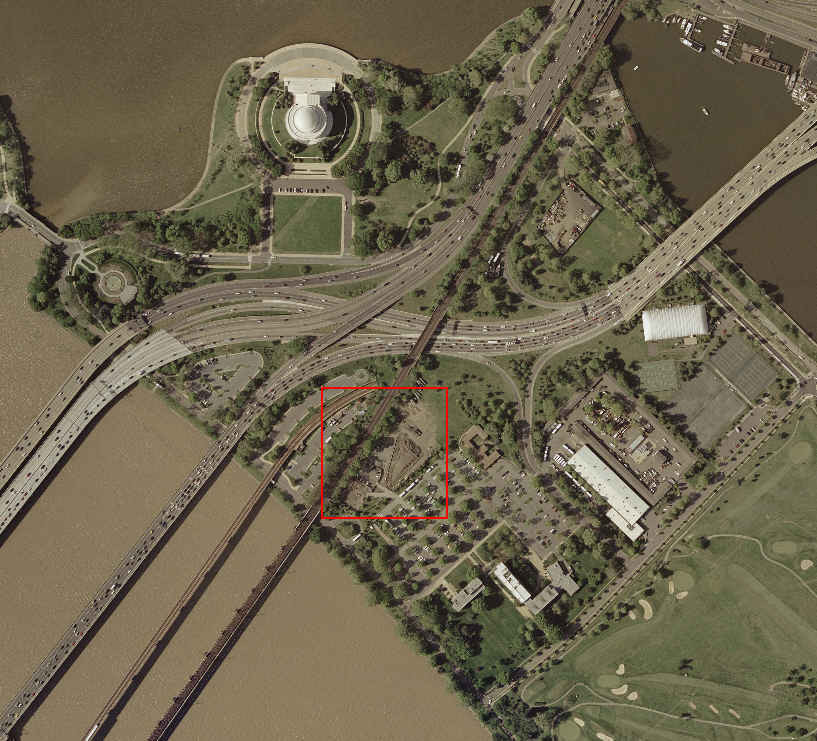 |
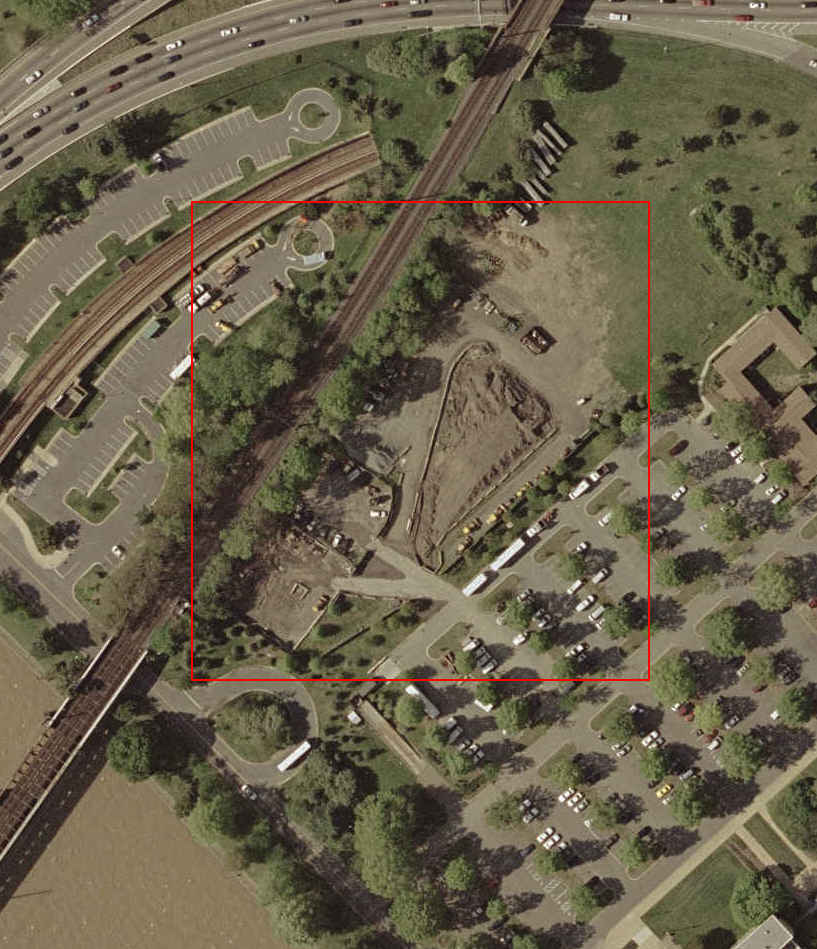 |
| Navy Facility Digital Globe 1 January 2004
|
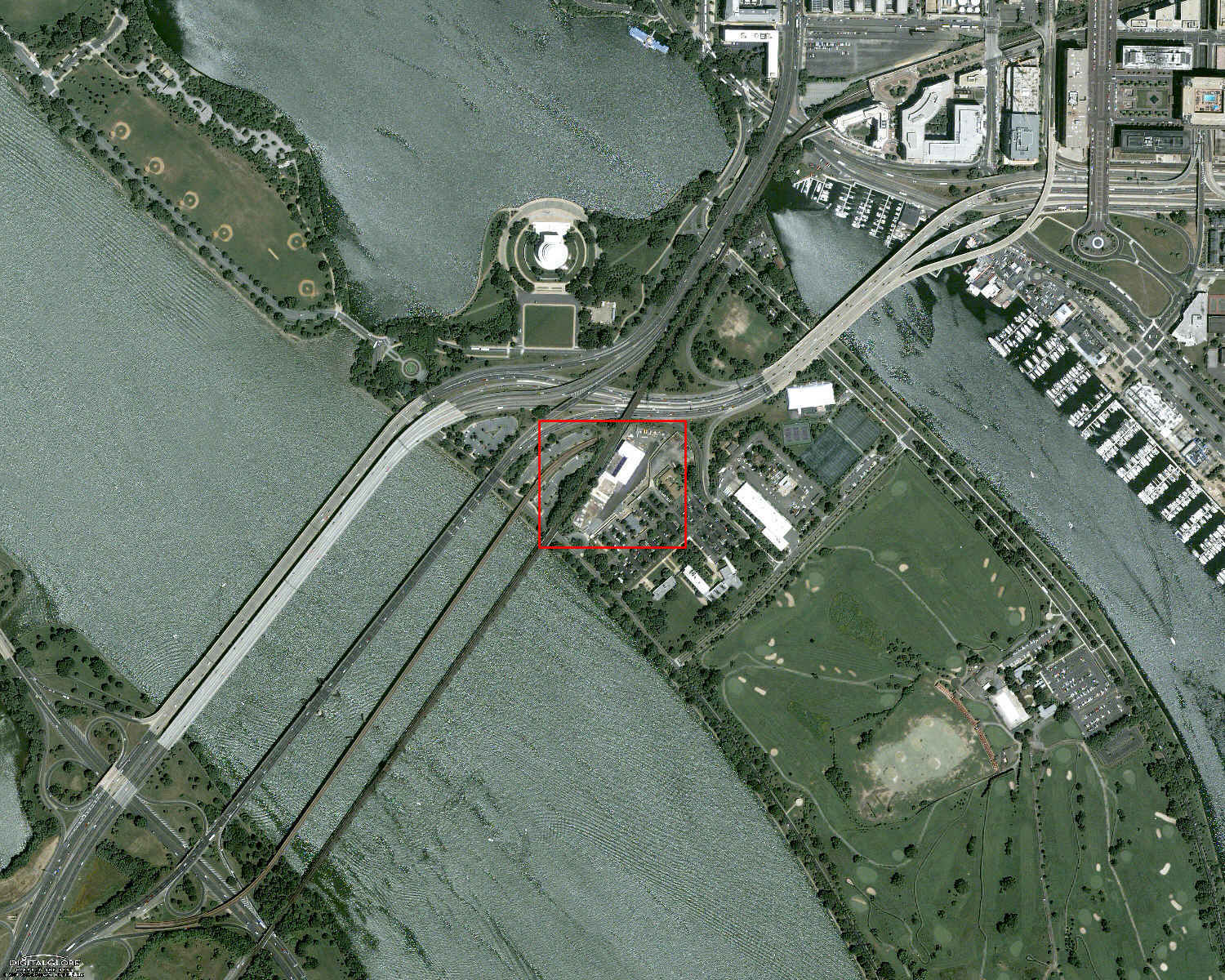 |
On another not so secret project, the USGS has obscured the White House, the Executive Office Building and the Treasury Department, but commecial NASA satellite photo sources have not.
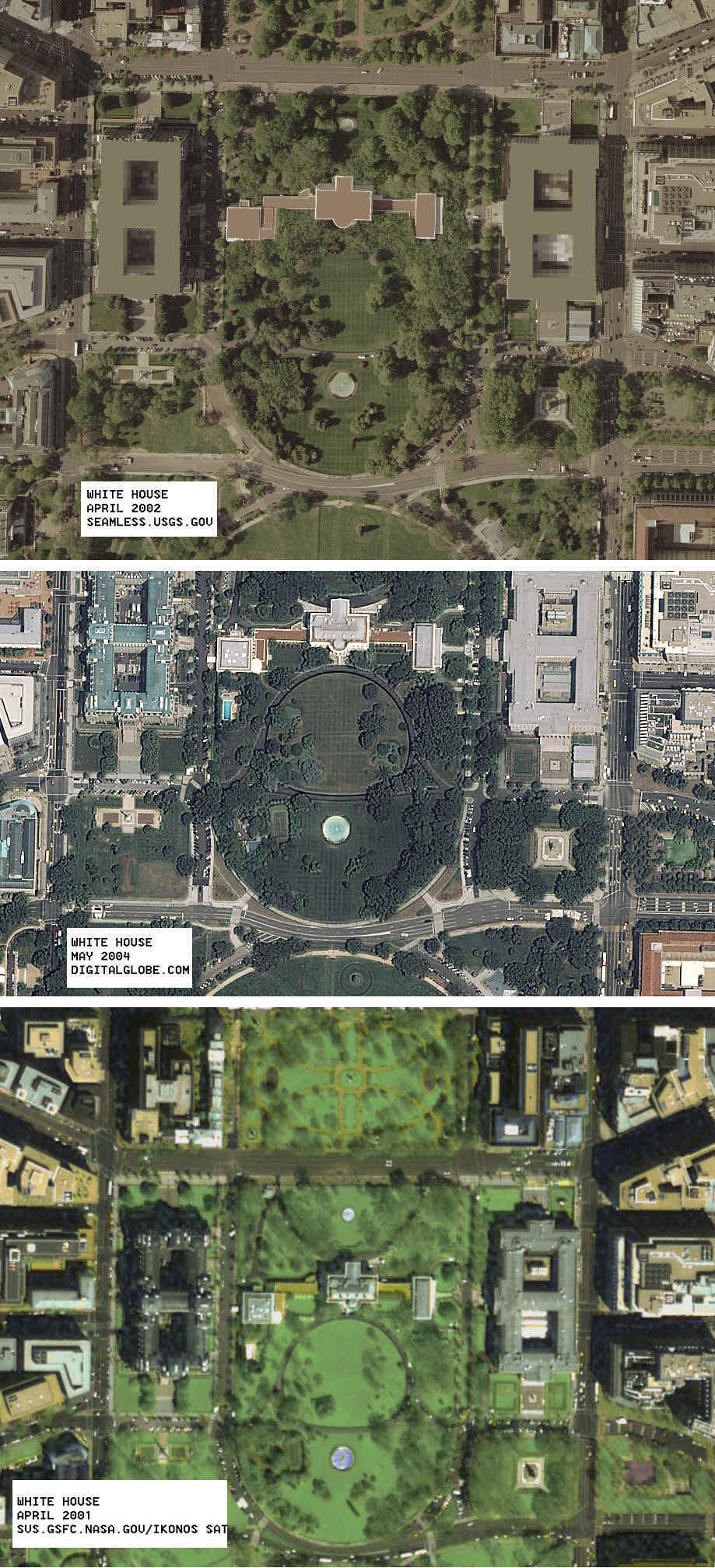 |
| White House Digital Globe 1 January 2004
|
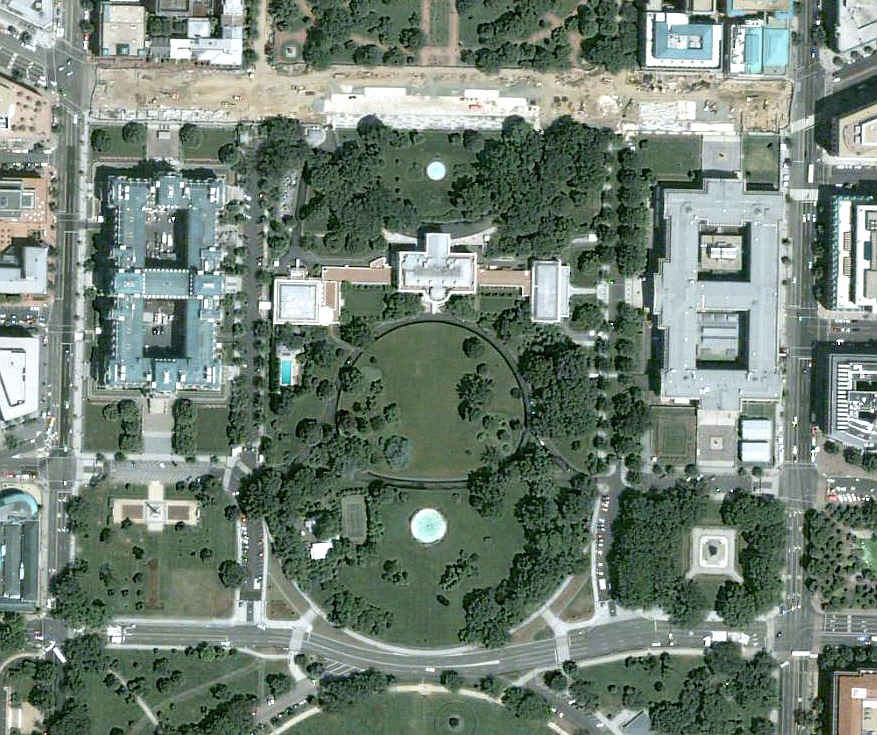 |
| Vice Presidential Residence, Naval Observatory Digital Globe 1 January 2004
|
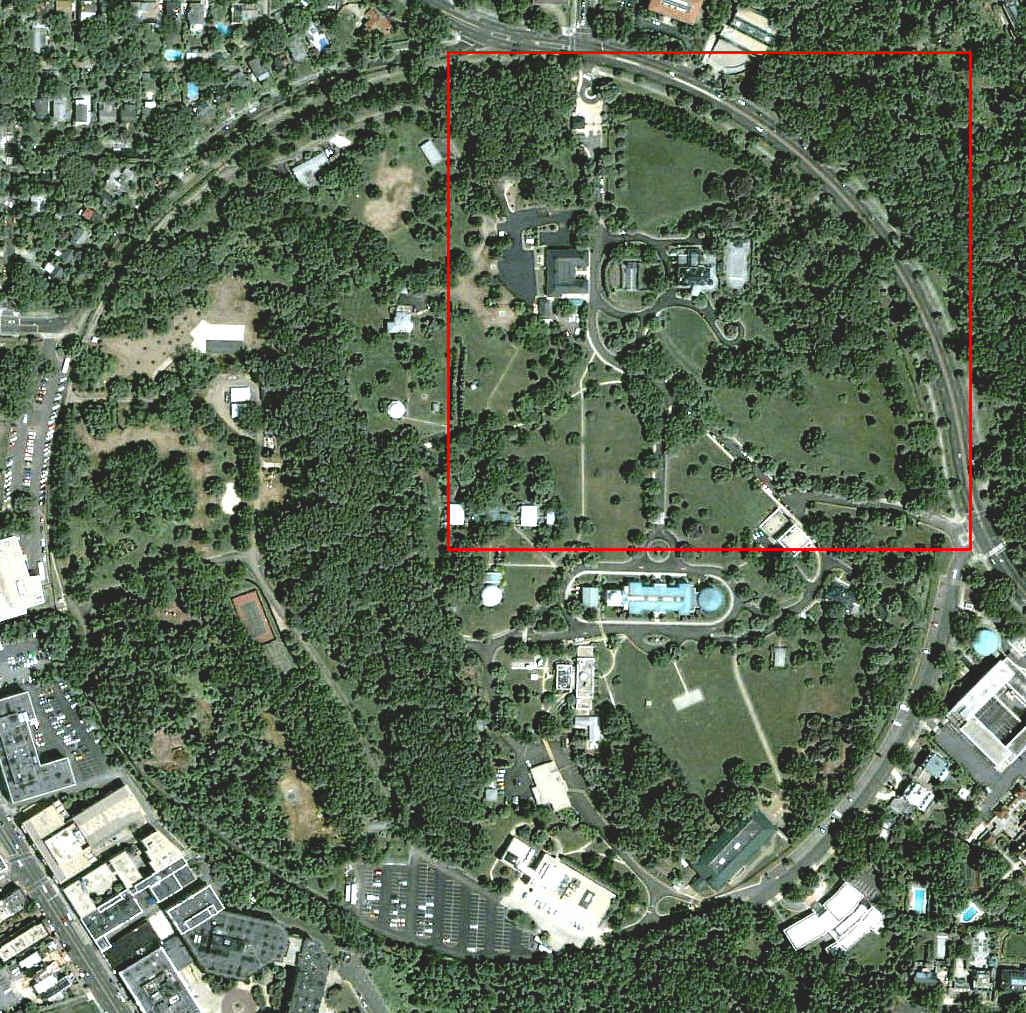 |